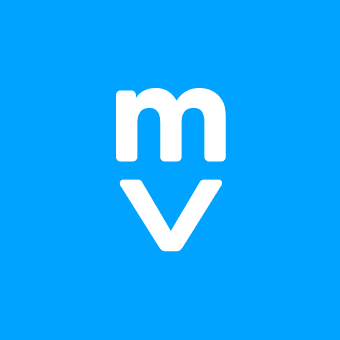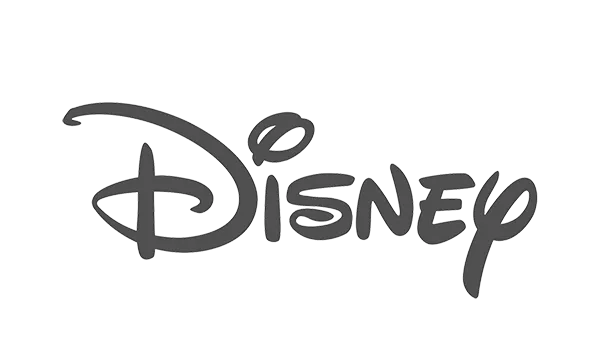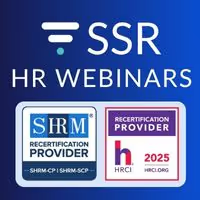Human resources professionals hold the keys to a company's success. But, as with any other sector, the role of HR is continuously being reshaped by advancements in technology. One such transformational trend is the rise of HR process automation, such as recruiting automation software.
This article explores the exciting world of HR automation, examining its benefits, drawbacks, trends, practical examples, key areas of implementation, and the return on investment.
What is HR Automation?
HR automation refers to the application of technology to streamline and enhance various HR functions. It aims to eliminate repetitive, mundane tasks, allowing HR professionals to focus on more strategic and value-adding tasks. These high-value tasks can focus on improving employee experience, employee engagement and retention, managing organizational change, and fostering a culture of innovation.
This shift from an administrative (reactive) role to a strategic (proactive) role not only has the potential to increase efficiency and accuracy but also enhances the HR department's overall effectiveness.
At its core, HR automation is the application of HR technology to perform human resources tasks more efficiently, effectively, and accurately. It's not about replacing human HR professionals but about empowering them to perform their roles more efficiently by reducing the burden of repetitive, mundane tasks.
What makes HR automation special is that it's designed to handle the unique needs of HR teams. For instance, an HR process automation tool, such as an applicant tracking system, can manage recruitment process automation, where it might sift through hundreds or even thousands of resumes to identify the most promising candidates based on pre-set criteria. It can also facilitate employee onboarding by automatically sending out welcome emails and notifications, providing information about HR policies, and guiding new hires through the necessary paperwork.
HR Automation Benefits
The value of using AI for recruitment is becoming increasingly clear, with AI being used to automate sourcing, screening, and interviewing candidates. According to recent HR statistics, 85% of employers who utilize human resources automation or AI report that it saves them time and increases their efficiency. Additionally, the number of applications that HR professionals need to manually review decreases to 44% or, in some cases, even 24%.
However, AI for HR is not just about automating routine tasks but also increasing the value of HR operations, making data-driven decisions, improving employee experience, and fostering a culture of continuous learning.
Thus, the benefits of HR automation are tremendous, but some key advantages include faster workflows, fewer human errors, cost savings, and scalability, plus easier compliance and the ability to leverage data.
- Faster workflows: Automation helps get things done faster. Imagine having to go through thousands of job applications by hand. With automation, this process can be done in a snap.
- Fewer mistakes: People make mistakes, especially with repetitive tasks. Automation reduces these human errors. Think of it as having a super-accurate calculator that never hits the wrong key.
- Automatic compliance: There are many rules, compliances, and laws HR has to follow. Automation helps keep track of these regulations, so HR doesn't have to worry about accidentally breaking them.
- Data-driven decisions: HR has to make important decisions about hiring, promoting, offboarding, and many other things. Automation tools can provide useful information on metrics, benchmarks, and performance to make these decisions easier and more effective.
- Convenience for employees: HR automation tools such as an HRIS or HRMS create online systems (or employee self-service portals) where employees can check their pay or overtime, ask for time off, or change their contact information. This makes life easier for everyone, not just HR.
- Cost savings: Automation positively impacts a company's bottom line by making routine tasks faster and with fewer errors.
- Scalability: As a company grows, its HR needs to grow too. Automation can handle these increasing needs without requiring more HR staff, making growth smoother and more manageable.

It is important to note that while these technologies offer substantial benefits, HR software implementation should be carefully managed to ensure an organization's unique needs and objectives are met. Moreover, the human element of HR should always remain at the forefront, with technology serving to enhance, rather than replace, human interaction and decision-making.
HR Automation Drawbacks
As with any other technological implementation, HR automation comes with its own set of challenges that companies need to anticipate and manage effectively:

- Jobs might change: A lot of HR professionals worry that automation could replace them. But it's more about changing jobs rather than losing them. As machines, software, and artificial intelligence handle routine tasks, humans may focus more on jobs that require strategy and people skills. Companies should help their staff learn new skills to absorb these changes and use them as a vehicle for career development.
- The options are overwhelming: Picking the right HCM software from the thousands of vendors and solutions on the market can also be difficult.
- The set-up and implementation process is tough: Starting off with HR automation can be difficult. Maintaining an adoption process takes time, effort, and buy-in from various stakeholders. Moving human-managed processes over to automation can be met with resistance from people who prefer the old ways of doing things.
- Data safety matters: HR automation systems handle sensitive employee data. If this data is not protected properly, it could lead to serious issues. Companies must choose secure systems and teach employees how to handle data safely.
7 Ways to Automate Your HR Processes
HR tasks that should be automated include hiring talent, welcoming new staff, keeping track of PTO and attendance, payroll/benefits administration, performance management, and training. These tasks, typically repetitive and time-consuming, can be transformed through automation to improve efficiency, accuracy, and productivity.
Screening Talent
When a company needs to hire new talent, it usually receives many applications. The manual process of screening these candidates can take days (or weeks) and slow down time-to-hire so much that great candidates are lost.
Automated software can help parse and screen these applications quickly, flagging the ones that best match the job requirements. This saves time, letting HR staff focus on the top applications and interviewing only the best candidates.
Onboarding New Hires
When a new employee starts at a company, there's a lot they need to know. Automation can help share important onboarding documents, explain rules, and set up the employee in the company's systems, making the process faster and smoother for everyone.
The HR automation tool can also deliver a pleasant introduction to the company by sending various preloaded templates with welcome messages for new employees and prompts to check in and follow up on their employee experience.
Tracking PTO and Attendance
Automated systems can keep track of holidays, sick days, and other time-off requests, making sure everything is fair and clear.
Automating Payroll and Benefits Administration
Automation helps with timesheet and remuneration calculations quickly and accurately, ensuring everyone is paid correctly and on time.
Asking Employees How They Feel
It's important for companies to know if their employees are happy and engaged. Employee engagement tools can automatically collect and analyze this information in real-time via surveys, making it easier for companies to improve the employee experience they offer.
Managing Team Performance
Automated performance management tasks can streamline the process of tracking employee performance. They make it easier to set goals, schedule performance reviews, track progress, and provide feedback.
Providing Workforce Training
Organizing training sessions and tracking progress can be simplified with automation. This makes it easier for employees to learn new skills and for the company to make sure their training is effective.
In simple terms, automating these tasks makes life easier for the HR department. It lets them focus on the bigger picture, like helping employees develop their skills and making the company a better place to work.

HR Automation Examples and Use Cases
The power of automation in HR is best demonstrated through real-world examples. These case studies highlight the transformative impact of HR automation across different industries and business scales, offering valuable insights and learnings for organizations contemplating a similar journey.
Storyblok
Storyblok, an Austrian tech firm, developed a remote onboarding automation strategy to manage their expanding team using the Zavvy platform.
The strategy includes preboarding, company onboarding, and role-related onboarding, all integrated with tools like BambooHR and Slack for a smooth experience. This innovative approach has resulted in an improved remote onboarding experience, with new hires rating their onboarding experience 9 out of 10.
Notably, this strategy saved considerable time, approximately 68 hours per month, translating to over €2,448 in monetary savings.
Starling Bank
UK-based digital challenger bank Starling Bank leveraged Workable's recruitment solution to scale from 50 to over 1,100 employees in five years. Workable's video interview feature significantly streamlined communication and screening processes.
Starling Bank reaped the benefits of video interviewing. As a result of this automation, it maintained its hiring pace and transitioned to a fully online recruitment process, positioning itself for continued growth.
PwC
Global professional services firm PwC used Workday’s people management software to transform into a skills-based organization. The project led to a 90% increase in recorded skills within one year, providing territories with various assets to support the transition. They also developed a global dashboard and a skills maturity matrix to measure success and track skills adoption.
In another initiative, PwC invested in a talent development strategy using Workday Recruiting to standardize its global hiring processes. A year and a half after the initial survey, 90% of its member firms were using Workday Recruiting, representing a 60% increase. This digital shift improved data integrity and efficiency and is expected to save up to 9,000 hours in one fiscal year.
Mondelēz
Fortune 500 company Mondelēz International focused on enhancing its HR data and organizational agility using Workday technology. The team successfully transitioned from traditional, encrypted flat-file transfers to API-based integrations, enhancing data exchange, and business agility. The deployment of Workday's Payroll Effective Change Interface (PECI) improved visibility and control over payroll data entry and exchange, leading to significant time savings and operational efficiencies.
CHRONEXT
Swiss luxury watch retailer CHRONEXT implemented a performance management solution by Leapsome to overcome challenges with their outdated process. The successful rollout of these tools led to a more efficient review process, improved employee engagement, and team development. The company now enjoys automated review cycles and insightful data-driven decision-making, reflected in an increase in its eNPS score.
Each of these examples underscores the transformative potential of HR automation. From employee onboarding and recruitment to skills development, performance management, and beyond, automation is enabling HR teams to perform their roles more efficiently, effectively, and strategically.
Key HR Automation Trends and Stats
Today’s recruiting and HR chatbots can handle queries, virtual reality is being used for training, predictive analytics are aiding in talent acquisition, and machine learning is personalizing learning experiences.
Coming AI automation trends may include the increased use of AI for personalized employee learning and development, predictive analytics for workforce planning, and advanced automation for comprehensive talent management.
1. Personalized Employee Learning and Development
AI is increasingly being utilized to tailor learning experiences, ensuring that employees receive training that aligns with their specific roles, skills, and career aspirations. LMS platforms like Kallidus, for example, use AI algorithms to analyze employee profiles, learning styles, and previous training outcomes. They recommend courses that would best fulfill individual developmental needs and organizational goals, which have proven effective for boosting team productivity and engagement.
Evidently, a new study found that organizations using AI-driven training reported increased organizational agility and competitiveness, as well as higher levels of staff engagement, motivation, and knowledge retention.
2. Predictive Analytics for Workforce Planning
Predictive analytics, powered by AI, is being harnessed for strategic workforce planning, and for good reasons. By analyzing historical data and current trends, organizations can forecast future workforce needs, helping to align talent supply with business goals.
Analyzed by MIT, companies like Johnson & Johnson use predictive analytics tools to identify potential skill shortages and surpluses within their workforce. These tools can analyze data points such as employee performance, market trends, and economic shifts to proactively recruit or develop talent.
Recent recruitment statistics echo this sentiment, with almost half of HR leaders stating AI helps them identify skill gaps and suggest talent development strategies and plans to improve retention.
3. Advanced Automation for Comprehensive Talent Management
Driven by our recent HR tech trends report’s findings, AI usage in HR doubled compared to last year, with 41% of departments now utilizing automation to streamline their recruitment, performance management, and overall HR processes.
AI applicant tracking systems such as Greenhouse, BambooHR, and Pinpoint leverage AI to sort resumes, rank candidates based on fit, and even conduct initial interviews through chatbots. This significantly reduces the time spent on manual resume screening and improves the candidate experience.
In fact, recent data shows that 42% of companies are already using AI for interview scheduling and resume screening, while 46% are using AI-powered reporting to track their success rate. As for the future, 93% of companies are expected to invest in recruitment technology in the coming months, and of that number, 34% plan to integrate AI specifically into their hiring processes.

ROI of HR Automation
In terms of costs, the expenses associated with HR automation tools can vary greatly depending on the needs of the organization.
The right HR software for small businesses may not be suitable for the needs of a large enterprise. The price you pay for a tool such as an HRIS or an ATS depends on the features you need, the number of employees or hires it must be able to process, and the vendor.
The payment plan you choose and the service provided (SaaS, once-off purchase, or subscription-based fees) can also significantly impact the cost. It's important to note that these tools usually require an upfront investment, which often includes costs related to the software license, implementation, and employee training.
For more information on this refer to our HR software pricing guide and HR Tech pricing datasets.
For ROI, HR automation can provide substantial returns by increasing efficiency and productivity. Interest in AI for recruitment, for instance, has grown as businesses recognize its potential to streamline hiring processes. Automating the employee onboarding process can further enhance the procedure, reducing the time and costs associated with manual tasks such as filling out forms and coordinating with various departments. Automated onboarding also means the process of integrating the new hire into workflows goes faster than with in-person training by team members, thereby making their contribution to overall profitability kick in sooner.
HR chatbots, another example of AI for HR, can assist with answering common employee questions, reducing the workload of HR personnel and allowing them to focus on strategic tasks.
In each of these examples, and many more applications of automation, the time-saving and accuracy technology brings to HR operations can be translated into real dollars saved. The ROI of moving from completely manual human resource management to processes that incorporate AI and automation can therefore be shown in the company’s profits.
Making a business case for using these tools is easier when projected ROI can be calculated. We cover HR tech ROI calculations in this online course.
Examples Where Automation Can Result in Significant ROI Include:
- Applicant Tracking Systems: An ATS can streamline the hiring process, making it less costly and more efficient at filling vacancies for optimal organizational productivity.
- Payroll Automation: Automating payroll administration can save significant amounts of time, money, and resources by eliminating the need for tedious hours reviewing spreadsheets and other manual payroll processing tasks.
- Time-Off Management: Automation can streamline attendance management, reducing the chances of errors and ensuring efficient handling of requests and PTO approvals.
- Employee Performance Management: Automated systems can help track and manage employee performance, boosting productivity and satisfaction.
"AI and automation are elevating HR practices to new heights. Companies are leveraging AI and ML algorithms not just for efficiency, but to deliver truly personalized employee experiences that align with their broader, strategic initiatives."
Jennifer Sales, our Head of RevOps, SelectSoftware Reviews.
Moving Towards HR Automation
In essence, automation in HR is about leveraging technology to streamline HR processes, improve accuracy, enhance compliance, and ultimately, allow the HR department to focus on strategic tasks that can't be automated, such as building relationships with employees, fostering a positive workplace culture, and aligning HR strategies with the company's overall goals. It's about making the HR teams more human by letting machines handle the routine.
Understanding AI in HR is integral to fully leveraging these benefits.
However, while automation brings numerous benefits, it's crucial to remember that it's not a magic bullet. Organizations must consider their specific needs, potential drawbacks, and the cost of automation tools before embarking on the automation journey. Successful automation is a balanced act of applying technology where it is most effective and retaining the human touch where it is most valuable.
In conclusion, HR automation is a powerful ally in managing and improving HR tasks. It is an exciting avenue to explore as we continue to advance in technology, and its impact on HR management is undoubtedly profound. As we look forward to a future where machines and humans work hand in hand, it is clear that HR automation will play a pivotal role in shaping efficient, effective, and human-centered workplaces.



























